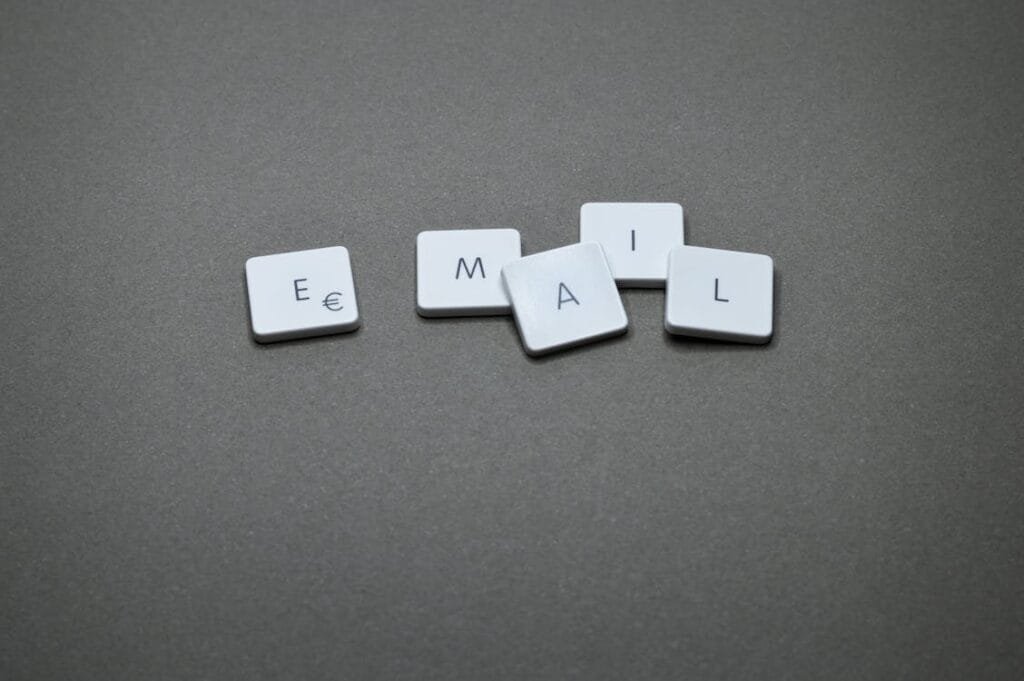In 2024, the email marketing landscape is bustling with numerous tools, each promising to elevate your marketing game. In this crowded space, two names often spark curiosity and debate: Mailchimp and MoonMail. Both platforms have their loyalists and unique selling propositions, but as a business owner or marketer, which one should you choose? This comprehensive guide will walk you through a head-to-head comparison, helping you decide the best email marketing companion for your journey in 2024. Let’s dive in!
Ease of Use: A Critical Comparison
Getting Started: First Impressions Matter
In the world of email marketing tools, first impressions are crucial. The ease of setting up, navigating, and starting your first campaign can significantly influence your long-term relationship with the platform.
Mailchimp has long been celebrated for its intuitive user interface. Right off the bat, setting up an account and navigating through its features feels straightforward. Mailchimp guides you with a friendly hand, making the process of creating an email list and launching your first campaign less daunting. The platform’s drag-and-drop email builder is a highlight, especially for those without any technical background. It allows users to craft professional-looking emails with minimal effort.
MoonMail, on the other hand, presents a slightly different approach. Its setup process is simple, but it leans more towards users who have a basic understanding of email marketing. The interface is clean and uncluttered, offering a no-nonsense experience. MoonMail excels in its simplicity, making it a good choice for those who prefer a more straightforward, less hand-holding approach.
Designing Your Emails: Templates and Customization
The heart of any email campaign is the email itself, and here, the capabilities of your chosen tool can make a significant difference.
Mailchimp offers a rich library of email templates, catering to a wide array of needs and occasions. These templates are not just abundant but also highly customizable. Whether you’re promoting a product, sending out a newsletter, or crafting a holiday greeting, you’ll likely find a template that fits the bill. The customization process is also intuitive, allowing you to infuse your brand’s personality into each email effortlessly.
MoonMail, while having a more limited selection of templates compared to Mailchimp, focuses on customization and flexibility. Its templates are designed to be a starting point, encouraging users to tweak and transform them into something uniquely theirs. This approach is particularly appealing to those who view each email as a blank canvas, ready to be painted with their brand’s colors and voice.
Automation and Workflow
In 2024, automation is not just a luxury; it’s a necessity. Both Mailchimp and MoonMail offer automation features, but with different levels of sophistication and user-friendliness.
Mailchimp’s automation tools are robust and user-centric. Setting up automated campaigns, like welcome series, birthday emails, or follow-up messages, is almost effortless. The platform provides pre-built workflows that can be customized to fit your specific needs, making it easy for anyone to harness the power of email automation.
MoonMail takes a more streamlined approach to automation. While it may not offer the depth of Mailchimp’s automation features, its tools are straightforward and easy to understand. This simplicity makes MoonMail an attractive option for those who need basic automation without the complexity.
Pricing and Affordability: A Key Decision Factor
Navigating Through the Cost
When it comes to choosing an email marketing tool, how much you pay is as important as what you get. Both Mailchimp and MoonMail offer different pricing strategies, each tailored to suit various business sizes and needs.
Mailchimp
- Free Plan: Available with basic features, suitable for up to 2,000 contacts and 10,000 sends per month with a daily limit of 2,000.
- Essentials Plan: Starting at around $9.99/month, this plan includes all email templates, A/B testing, custom branding, and support for up to 50,000 contacts.
- Standard Plan: Starting at approximately $14.99/month, this offers additional features like retargeting ads, advanced insights, and automation tools, catering to up to 100,000 contacts.
- Premium Plan: Starting from $299/month, aimed at larger businesses, offering advanced segmentation, multivariate testing, and unlimited seats and role-based access.
Moonmail
- Free Plan: Includes limited features for up to 2,000 subscribers and 300 emails per day.
- Starter Plan: Typically starts around $23.99/month for up to 10,000 subscribers.
- Growing Business Plan: For larger lists, priced around $79/month for up to 50,000 subscribers.
- Enterprise solutions: Custom pricing based on the business’s specific requirements.
Mailchimp adopts a tiered pricing model, which includes a popular free plan. This free option is perfect for small businesses or startups beginning to explore the world of email marketing. As your needs grow, so do the plans – Essentials, Standard, and Premium. Each tier offers more advanced features, and the pricing scales primarily based on the number of contacts you have. This model is beneficial as it grows with your business, but it’s important to be aware that costs can escalate as your subscriber list expands.
MoonMail, conversely, offers a different approach to pricing. It provides a free plan as well, but with a unique twist – it allows sending emails to unlimited contacts, but with a daily sending limit. Its paid plans are structured around the number of emails sent per month rather than the number of contacts. This can be a cost-effective solution for businesses that have a large subscriber list but send emails less frequently.
Assessing Value for Money
When considering Mailchimp, it’s crucial to think about the long-term costs, especially if you anticipate rapid list growth. The platform’s higher-tier features, like advanced segmentation and multivariate testing, are available only in the more expensive plans.
MoonMail, while offering a more limited feature set in its free plan, can be more budget-friendly for businesses with a large number of contacts but lower email frequency. Its pay-as-you-go model in the higher tiers also provides flexibility for businesses with fluctuating email sending needs.
Integration Capabilities: Expanding Your Marketing Ecosystem
The Power of Connectivity
In the digital marketing world, a tool’s worth is often judged by how well it plays with others. Integrations with other software and services can significantly enhance your email marketing efforts.
Mailchimp shines in this area with its extensive range of integrations. From popular eCommerce platforms like Shopify and WooCommerce to CRM systems like Salesforce, Mailchimp connects seamlessly with a plethora of tools, enhancing its functionality and versatility.
MoonMail offers a more focused set of integrations. While it might not match the sheer volume of Mailchimp’s integrations, it covers the essentials. MoonMail integrates effectively with major eCommerce platforms and several other tools, ensuring you can link your email marketing campaigns with other critical business processes.
API Access for Custom Solutions
For businesses with specific integration needs, both Mailchimp and MoonMail offer API access. Mailchimp’s API is robust and well-documented, making it a favorite among developers for custom integration projects.
MoonMail’s API, while less extensive, provides the necessary capabilities for building custom integrations. This is especially useful for businesses that require a tailored approach to integrate their email marketing tool with their unique tech stack.

Related: Check out our free SEO suite

Customer Support: The Lifeline for Users
Good customer support can make a world of difference, especially when you’re navigating the complexities of an email marketing tool. Both Mailchimp and MoonMail offer support to their users, but their approaches and effectiveness vary.
Mailchimp has a well-established support system, including email support, a comprehensive knowledge base, and community forums. For users on higher-tier plans, it also offers 24/7 live chat and phone support. Mailchimp’s strength lies in its extensive self-help resources, which are filled with guides, tutorials, and answers to frequently asked questions. This wealth of information is invaluable, especially for users who prefer to troubleshoot issues independently.
MoonMail takes a more straightforward approach to customer support. While it may not have as extensive a library of resources as Mailchimp, it provides direct support channels including email and live chat. MoonMail’s support is generally responsive and helpful, ensuring that users can get assistance when they need it. This direct support model is beneficial for users who prefer a more personal touch when seeking help.
Importance of Responsive Support
The responsiveness of customer support can significantly impact your experience with the tool. Mailchimp, with its large user base, has systems in place to handle a high volume of support requests efficiently. The platform’s proactive approach in offering detailed resources helps in reducing the dependency on direct support.
MoonMail, on the other hand, might not have the same level of resources as Mailchimp, but its commitment to providing direct and prompt support makes it a reliable choice for users who might need more hands-on assistance.
User Experience and Learning Curve: Key to Long-Term Adoption
In the realm of email marketing tools, the user experience and the associated learning curve can significantly influence how effectively you can leverage the platform’s capabilities.
Mailchimp is renowned for its user-friendly interface, making it an excellent choice for beginners or those looking for a straightforward email marketing solution. Its intuitive design, easy navigation, and simple yet powerful email builder make the process of creating and managing campaigns accessible to everyone. The platform’s design is centered around making complex tasks simple, ensuring that users can achieve their marketing goals with minimal hassle.
MoonMail offers a clean and uncluttered interface, focusing on simplicity and functionality. Its user experience is geared towards those who prefer a no-nonsense, straightforward approach to email marketing. While MoonMail may not have the same level of detailed guides and resources as Mailchimp, its intuitive design ensures that users can quickly get up to speed with the platform’s key features.
Flexibility and Customization
Both platforms offer a degree of flexibility and customization in their campaigns, but they cater to different user needs. Mailchimp provides a balance between ease of use and customization options, making it ideal for businesses that want to create professional-looking emails without a steep learning curve.
MoonMail, with its more streamlined approach, offers enough customization to meet the needs of most users while maintaining simplicity in its design and functionality. This makes it suitable for users who value efficiency and straightforwardness in their email marketing tool.
Conclusion
After delving into the various facets of Mailchimp and MoonMail, it’s clear that each platform brings its unique strengths to the table, catering to different needs and preferences in the dynamic world of email marketing.
Mailchimp stands out as a user-friendly and versatile tool, perfect for small to medium-sized businesses, as well as beginners in the email marketing arena. Its intuitive interface, extensive template library, and a wide range of integrations make it an ideal choice for those seeking an easy-to-use yet powerful solution. The tiered pricing structure, including a free plan, ensures that businesses of all sizes can find a suitable option, although costs can increase with the growth of your subscriber list. Mailchimp’s comprehensive support system and wealth of self-help resources are also significant advantages for users who prefer a DIY approach to problem-solving.
MoonMail, on the other hand, offers a more streamlined and straightforward experience, appealing to those who prefer simplicity and efficiency. Its unique pricing model based on the number of emails sent, rather than the number of contacts, can be more cost-effective for businesses with large mailing lists but lower frequency of emails. While MoonMail might not match Mailchimp in terms of feature depth or integration variety, it excels in providing a no-frills, easy-to-navigate platform with sufficient capabilities for effective email marketing.
- Read Next
- Aweber vs Mailchimp: The Best Email Marketing Tool for 2024
- The Role of Visuals in Email Marketing: Enhancing Engagement with Images and GIFs
- Mailchimp vs Zoho Campaigns: The Best Email Marketing Tool for 2024
- Mailchimp vs Drip: The Best Email Marketing Tool for 2024
- Mailchimp vs iContact: The Best Email Marketing Tool






















Comments are closed.